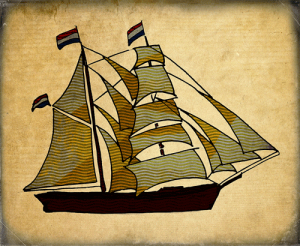
The story of the famous Mocha Java Blend likely began over a thousand years ago.
We dont know for sure when coffee, born in Ethiopia, first crossed the Red Sea into Yemen but coffee may have been cultivated in Yemen as early as the sixth or seventh century. By the late 1500s coffee was an important export, leaving Yemen from the port city of Mocha and so for hundreds of years coffee from that region was called Mocha, even after the opening of the Suez Canal, which meant Mocha was no longer a viable coffee port. One hundred and fifty years after the Ottoman Turks occupied Yemen and turned it into the center of the coffee trade, the Dutch began growing coffee in Java. Cultivation spread throughout the islands of the region and soon Java coffee was just as sought after as Mocha coffee. The two most popular coffees in the world for over 100 years (Rio, or Brazilian coffee, eventually joined them) they were very different from each other. Coffees from Indonesia were and still are full bodied in general, mild and low in acidity, tending toward more savory and nutty flavors.

Most coffee from the region has been lower quality commercial grade for over a hundred years now but the quality of traditional coffees available still exhibit these characteristics. Coffees from Yemen and naturally processed coffees from the Harar region of Ethiopia tend to be bright, floral and fruity. It was perhaps inevitable that someone at some point would blend the two searching for something greater than the sum of their parts. Mocha Java was born. In tribute to one of the worlds oldest coffee blends, Batdorf & Bronson blends our Java Estate coffee with our Ethiopian Harar to produce a mild yet deeply satisfying cup of coffee.

With a hint of dried fruitfrom the Ethiopian coffee and exotic spice from the Java. Our Mocha Java is one of our most popular blends, thoroughly enjoyed by those who like a little history with their coffee.
